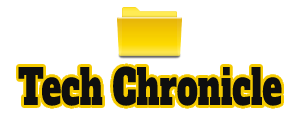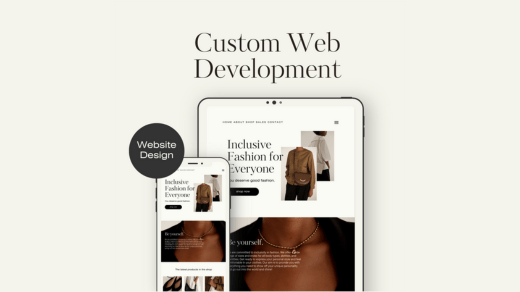It is, therefore, fundamental to tailor a site with unique features before creating a web company ‘s online image. In this paper, the focus is placed on how the customization of websites, be it for a blog or for an e-business selling groceries or for a large company’s intranet, can improve user experience, audience’s interactivity, and the overall organisational performance based on the audience’s needs and preferences. Here are essential points to consider while customising a website:Here are essential points to consider while customising a website:
We specialize in custom web development that provides scalable solutions tailored to your business requirements.
1. Purpose and Goals
Education about the key goals of a particular internet-based platform is the initial step that needs to be taken. Define what you aim to achieve: The question that should be answered when designing advertising is to educate, to make sales, offer, or to entertain. Depending upon the objective proposed, there will be a different design and functionality. For example, an e-commerce store demands especially strong shopping cart functionality, whereas a blog is going to need a solid content management system.
2. Target Audience
It is always essential to understand your market, as it would be hard to sell a product to a particular group of people if they do not appreciate it or have no use for it. It is crucial to understand the demographical data, personal preferences, and how guests of the event would behave. It is also equally important to build a website that suits the requirements of the customers or the end users so that the satisfaction level remains high and users continue to visit often. For instance, the student target audience would appreciate a design that is fun and flashy, with icon links that are always blinking on the screen, unlike the business target audience, which would definitely appreciate a clean, simple design with links to comprehensive data.
3. This post will focus on the definition and processes that go into creating User Experience (UX) Design as a field of study.
User experience is paramount. UX best practices help in building a webpage that can be easily navigated, easily searched, all the necessary information can be accessed without much effort, and any necessary action on the site can be made effortlessly. Some of them include; ease of navigation, quality of messages, time taken to load a page and its responsiveness in a mobile device. The visual design should be simple, uncluttered and the navigation structure and style should be uniformly applied across the whole website.
4. Asset = Visual Design and Branding
So in this case, it is essential to focus on the appeal of your website as it is part of customization. Make sure that your website matches the identity of your business in terms of the colours, typefaces, images, logos, and photographs you choose. It was pointed out that a consistent brand would assist in the branding process as this would ensure that the clients gained recognition and trust in the particular product. Choose excellent and relevant pictures and graphic images that support your brand identity and the message being passed across. Nonetheless, one ought to ensure that they do not overemphasise the aesthetic designs in such a way that may compel the users to be overloaded with lots of information as they go through various sections of the website.
5. Content Strategy
Globally, it has been said and will always be a truism for the online world that ‘Content is King’. Give proper consideration to content development as an essential aspect of marketing and shape a strategy that would best fit the intended purpose and audience type. If fresh and high-quality content is posted frequently, then this is good for the website in terms of SEO, interesting to readers, and creates credibility for its source. It means that when deciding on which content you want to create, you need to take into consideration that some people like reading blogs, whilst others prefer to watch videos, listen to podcasts, and read infographics. Also, it is essential to make the content easy to navigate and read, following the formatting conventions with headings, bullet points, and infographics.
6. SEO is a method of increasing the ranking of a website, which is designed to return the most relevant results for a given search on the basis of the relevance of the keywords placed on the web page, among other ranking factors.
SEO is vitally important as what it does is optimising your website so it can be easily recognized by search engines. It is advisable to tailor your site for SEO services when designing where features such as keyword placement, meta tags, alt texts of images, and sitemaps come in handy. Other areas that tend to help improve the SEO performance include consistent update of contents and site loading speed.
7. Functionality and Features
Web design is about identifying the features and operations necessary to exist on the site. This could be the ability to add elements like contact forms or fields, social network sharing buttons, an integrated shop or booking webpage, or the opportunity to create user profiles. Customizations are valuable when they effectively fit form and function to provide a positive user experience and respond to special business requirements. It is vital to ensure that all the features that are created are tested to the last to get rid of slip ups that may discourage the users.
8. Security
Security is one of the most crucial aspects, especially if the given website provides services that involve the user’s personal information or other important data like payment details. Some of the recommendations in addressing this include using security features such as secure sockets layer certificates, proper security reviews, secure check out processes, and data encryption mechanisms. Therefore, one needs to alert the users on the action taken and the measures in place concerning security in order to gain the trust of the users.
9. Scalability
There is nothing wrong with having a large or expanding business or personal brand, but your website should always be able to grow along with it. Lay out a system which could grow with your data: For example, to defend plus expand with developing products, more comprehensive articles, or greater visitor volumes. Adaptive systems allow you to avoid some significant changes due to the increase in demands as you grow.
10. Essentials Of Analytics & Performance Monitoring
Coordinate analytics for increased website visitors’ activity tracking and performance indicators. It is also crucial to recognize how consumers engage with your site because the info is practical for improvement. It is also recommended to discover novel opportunities for tactic optimization in the analytics data by analysing figures of average page load time, bounce rates, and conversion rates.
11. Compliance and Accessibility
Also, make sure that elements of your site do not violate the law and are accessible to people with disabilities. This covers the general data protection regulation for handling of personal data especially to users and clients in the European Union and also ensuring that the website complies with the web content accessibility guidelines in order to make the website accessible for those with disabled abilities. Continue reading to discover why compliance is necessary and extends your reach.
Enhance your online presence with our custom website development tailored to meet your specific business needs.

